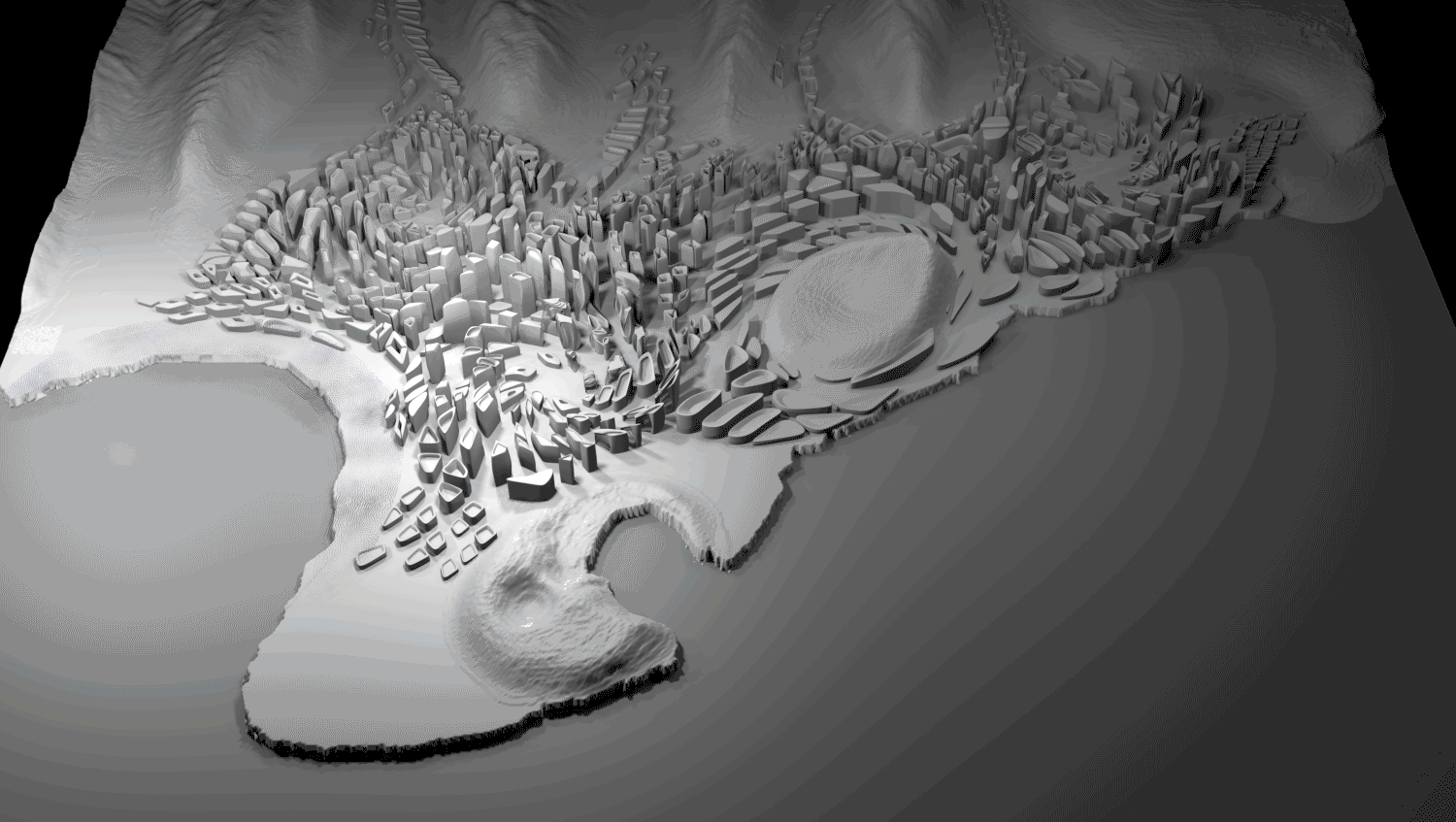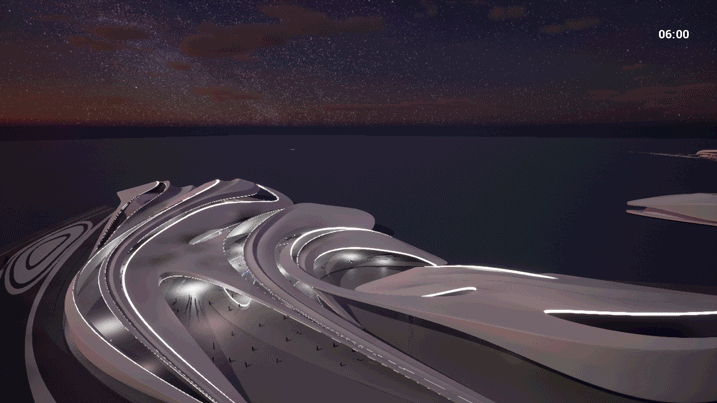Vortexity
Studio Patrik Schumacher
Tutors Jose Pareja, Philipp Siedler
Team Amanat Sobti, Ben Gu, Luyao Huang, Michelle Pereira, Rishil Parikh
We live in an era of a significant shift in the way virtual environments are being viewed and experi-enced. Emerging virtual spaces have given rise to seemingly endless possibilities with regards to social, communicative, and interactive transactions.
As a step to develop these virtual environments the idea of the metaverse was conceptualized wherein physical and virtual converge together to formulate a new hybrid reality. With the advancements in VR and AR technology various degrees of immersive experiences have now been realized. We strongly believe that the development of these virtual environments will be greatly influenced by interventions made by architects, which is why we explore several of those possibilities in our design for metaverse city entitled Vortexity.
As our society progresses change and adaptation begin to be more readily accepted. In our approach towards the virtual city of Vortexity, we introduce a way to view the metaverse as a constantly adap-tive and semiologically influenced navigable platform. Such virtual environment creates opportunities for heightened levels of human interaction enriched by occurrences within our physical realities. By creating spatial differentiations within the paths and curvatures of varied areas of urbanity and sub-urbanity an evolving spatial identity is formulated as users traverse between various points of the physical and virtual city.
Within the virtual city environment, the metaverse is visualized as a dynamic urban platform centred around user generated information rich systems. By the utilization of user data and behavioural trends, users within the Vortexity benefit from customizable individual specific experiences that could be further communicated with others. This shared platform ruled by a decentralized form of govern-ance is endowed with possibilities to alter the urban fabric and initiate reactions to changes in various aspects, for example in user demand, market value and other. To propagate interaction and aware-ness within this virtual environment a redefinition of the familiar architectural systems was imple-mented to establish a framework for heightened interaction.










